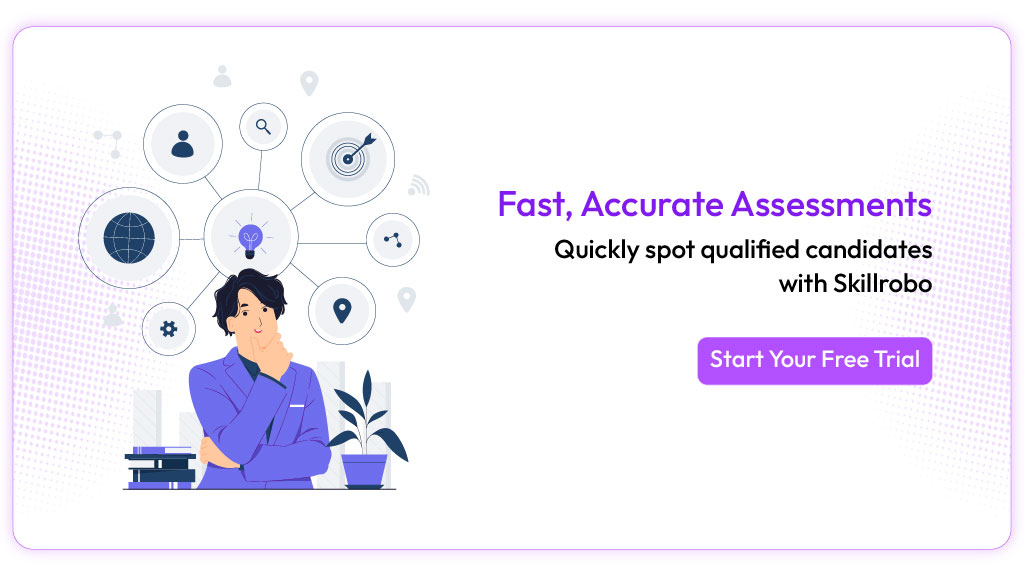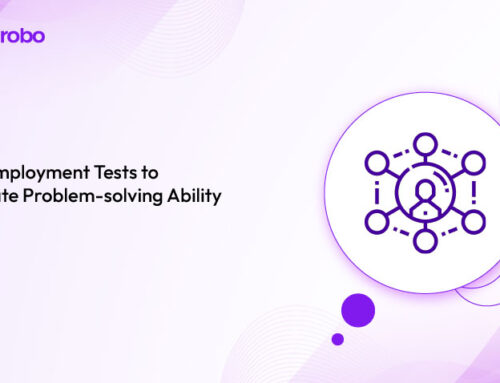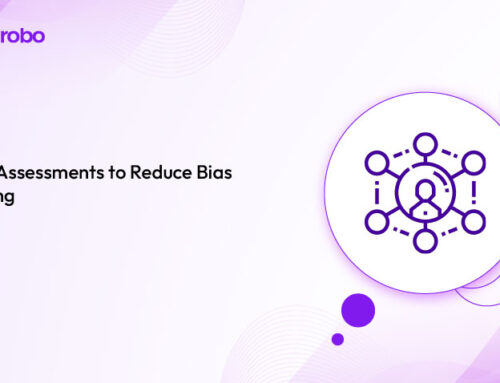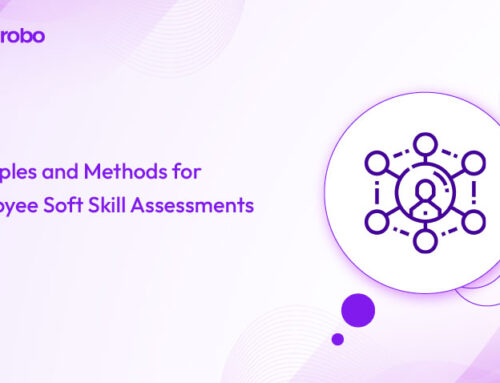
Key Takeaways
- Pre-employment screening tools provide predictive insights that lead to better hiring outcomes and workforce alignment.
- Using screening analytics helps reduce bias, increase transparency, and improve candidate quality over time.
- 64% of recruiters say data-driven hiring helps reduce turnover in the first year of employment.
- Skill-based data allows companies to personalize onboarding and long-term development plans for each role.
Why Data is Your Best Recruiter
Hiring based on intuition might feel efficient, but it’s risky. Resumes can be embellished, interviews can be biased, and even the best gut instincts can miss red flags. Traditional screening often prioritizes surface-level traits over deeper indicators of performance, leading to mis-hires that impact productivity, morale, and cost.
This is where data changes the game.
Modern pre-employment screening tools use structured assessments and analytics to offer clear, objective insights into a candidate’s skills, potential, and behavior. Instead of relying solely on what a candidate says they can do, you see how they perform, on the metrics that matter most to your organization. In this blog, we explore how data transforms the hiring process from guesswork into a measurable, repeatable strategy.
From Resumes to Real Insights: The Power of Data-Driven Screening
A resume tells you what a candidate wants you to know. Pre-employment assessments reveal what they can actually do. Tools like Skillrobo enable hiring teams to automate pre-employment skill assessments and capture data such as timing, accuracy, and problem-solving methods. This level of insight empowers recruiters to make objective comparisons between candidates and forecast future performance more accurately.
In fact, recruiters using structured screening tools have been able to significantly improve time-to-hire and reduce post-hire attrition, especially when benchmarks are aligned to actual job success metrics.
This data empowers recruiters to:
- Compare candidates across consistent benchmarks: Ensuring a fair and objective evaluation process.
- Identify hiring patterns over time: Recognizing trends that can inform future recruitment strategies.
- Predict performance and potential with greater accuracy: Leveraging data to forecast a candidate’s success in a role.
Stat Spotlight – Organizations utilizing data-driven hiring strategies are three times more likely to improve their recruitment efficiency year-over-year.
Enhancing Every Stage of Hiring with Data-Driven Insights
Hiring isn’t a single decision—it’s a series of touchpoints that shape who makes it through the funnel. By leveraging data at every stage, from early screening to final offers, recruiters can streamline processes, personalize interviews, and reduce guesswork. In this section, we explore how analytics elevate hiring from reactive to strategic.
1. Early Funnel Filtering
Manually reviewing hundreds of resumes is time-consuming and often unreliable. Screening platforms now allow recruiters to assess candidates quickly and fairly through job-relevant tests. For example, pre-employment tests for remote workers on Skillrobo help filter candidates based on real skills rather than keyword-matching. This ensures only high-potential applicants move to the next stage, especially useful in high-volume or remote hiring scenarios
2. Interview Preparation
The interview becomes more effective when informed by screening data. Instead of vague questioning, recruiters can zoom in on specific insights. If a candidate scores high on logical reasoning but low in verbal expression, interviews can probe their ability to communicate ideas. To support this, recruiters often use platforms like Skillrobo to test communication skills before hiring, ensuring that interviewers have access to candidate-specific strengths and blind spots.
3. Final Decision-Making
When two candidates have similar resumes, assessment data helps break the tie. Dashboards that show skill-wise scores, behavioral tendencies, and task completion times offer clarity. Skillrobo’s assessments are particularly effective in this area, helping companies reduce hiring bias by replacing subjective judgment with evidence-based comparisons.
Types of Data That Matter Most
In the realm of data-driven hiring, not all metrics carry equal weight. Focusing on the right data points can significantly enhance the quality of your recruitment decisions. Let’s delve into three critical data types that can provide deeper insights into candidate potential.
1. Time-on-Task Metrics
Time-on-task measures how long a candidate takes to complete specific assessment tasks. This metric can indicate whether a candidate is thoughtfully considering their responses or making rapid guesses. For roles that require analytical thinking and problem-solving, such as data analysis or software development, time-on-task can be a valuable indicator of a candidate’s approach to complex challenges.
2. Behavioral Patterns
Cultural fit, leadership, and resilience don’t appear on resumes, but behavioral assessments capture these traits. Skillrobo’s behavioral assessment module evaluates stress tolerance, collaboration, and problem-solving approaches, giving employers a preview of how candidates would integrate into real team dynamics.
3. Comparative Analytics
Seeing a candidate’s score in isolation isn’t enough. Benchmarking against current top performers helps recruiters calibrate their decisions. Skillrobo allows hiring teams to design custom assessments tailored to each role, making benchmarking more role-specific and relevant to your organization’s goals.
Pro Tips for Using Screening Data Right
Collecting screening data is just the beginning—how you interpret and act on it is what drives smarter hiring. To make the most of your assessments, recruiters must move beyond surface-level scores and focus on actionable insights that align with real-world job performance. In this section, we’ll explore best practices for analyzing and applying screening data to make confident, well-rounded hiring decisions.
1. Break down skill sections—not just total score
A single overall score doesn’t give the full picture. Dig deeper into section-wise performance to see where a candidate excels or struggles. For instance, a high overall score might mask weak communication or teamwork skills. Identifying these nuances early ensures a better fit for role-specific expectations and future development plans.
2. Continuously update benchmarks based on role needs
Job roles evolve—and so should your benchmarks. Using outdated scoring thresholds can lead to inaccurate filtering. Analyze high-performing employees in similar roles and adjust your benchmarks to reflect what success looks like today. This ensures your screening remains aligned with business outcomes and market standards.
3. Use data to personalize onboarding and early development
Screening data isn’t just for hiring—it’s a valuable onboarding tool. If a new hire shows strong problem-solving skills but needs improvement in time management, early training can be tailored accordingly. This proactive approach accelerates ramp-up time and improves long-term retention.
4. Avoid data overload by prioritizing key metrics
More data isn’t always better. Identify 3–5 core metrics that directly relate to performance and cultural fit for each role. Overanalyzing every data point can slow down decision-making and create confusion. Focus on insights that are actionable and relevant.
What to Avoid When Interpreting Screening Data
Even the most advanced pre-employment assessments can lead to poor decisions if misinterpreted. It’s easy to fall into common data traps, like focusing too heavily on a single skill or ignoring inconsistencies across assessments. This section highlights the pitfalls recruiters should steer clear of when evaluating assessment results, ensuring that your data-driven process remains both effective and fair.
1. Don’t Overvalue One Skill Area
A candidate may ace the technical portion of a test, but that doesn’t guarantee they’re a strong collaborator or aligned with your company’s values. Hiring decisions should reflect a balance of skills, behaviors, and culture fit. Overweighting one score, like coding or numerical reasoning, can lead to blind spots in critical areas like adaptability or communication.
2. Avoid Interpreting Scores Without Context
Screening conditions vary. Was the test taken remotely? Was the candidate multitasking or under pressure? Context matters when evaluating time-on-task or pacing metrics. A slower response might indicate thoughtful analysis rather than uncertainty. Always consider environmental and behavioral cues when interpreting data.
3. Watch for Inconsistencies Across Multiple Touchpoints
If a candidate performs well in a skills test but poorly in a situational judgment or behavioral assessment, that inconsistency warrants attention. Don’t rely on a single data source. Use a combination of assessments to identify patterns and validate findings across multiple rounds of screening.
From Gut Feeling to Data-Driven Confidence
When done right, data doesn’t remove the human touch from hiring—it enhances it. Screening tools give recruiters and hiring managers the visibility they need to move beyond surface-level impressions and make confident, well-rounded hiring decisions. Whether you’re scaling a team or hiring for niche roles, integrating data into your process is no longer a luxury—it’s a necessity. Sign up for Skillrobo today to unlock the full potential of your pre-employment data and make every hire a strategic win.






